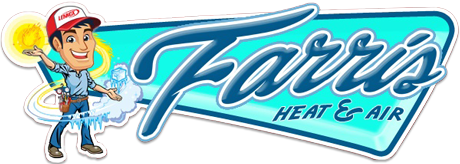
You shouldn’t need to sacrifice comfort or drain your wallet to keep your house at the right setting during warm days.
But what is the ideal temperature, exactly? We go over suggestions from energy experts so you can determine the best temperature for your family.
Here’s what we suggest for the most energy-efficient setting for air conditioning in Bartlesville.
Recommended Thermostat Settings for Summer
Most families find setting the thermostat at 72-73 degrees provides ideal comfort. However, if there’s a big difference between your indoor and outside temperatures, your electricity expenses will be greater.
These are our suggestions based on the U.S. Department of Energy (DOE) and ENERGY STAR®.
While at home: 78 degrees. While that appears too high, there are ways you can keep your house cool without having the air conditioning running constantly.
Keeping windows and curtains down during the day keeps cool air where it needs to be—indoors. Some window solutions, such as honeycomb shades or plantation shutters, are made to give extra insulation and enhanced energy efficiency.
If you have ceiling fans in your house, the DOE says you can move thermostat temperatures about 4 degrees hotter without sacrificing comfort. That’s due to the fact they cool by a windchill effect. As they cool people, not spaces, shut them off when you move from a room.
If 78 degrees still seems too uncomfortable on the surface, try conducting a trial for a week or so. Begin by increasing your thermostat to 78 degrees while you’re home. Then, progressively turn it down while using the advice above. You could be amazed at how comfortable you feel at a higher temperature setting.
While away: 88 degrees. There’s no rationale for keeping the air conditioning working all day while your house is empty. Moving the temperature 7–10 degrees warmer can save you as much as 5–15% on your electricity bills, according to the DOE.
When you come home, don’t be tempted to set your thermostat below 78 to cool your residence more quickly. This isn’t useful and typically results in a more expensive electrical bill.
A programmable thermostat is a helpful approach to keep your temperature controlled, but it requires setting programs. If you don’t utilize programs, you risk forgetting to change the set temperature when you go.
If you’re looking for a convenient resolution, think over getting a smart thermostat. This thermostat links with your phone, so it realizes when you’re at your house and when you’re gone. Then it instinctively adjusts temperature settings for maximum savings. How much exactly? An estimated $180 each year on heating and cooling, according to ENERGY STAR.
Another advantage of getting a smart thermostat? You can use your phone to keep an eye on and regulate temperature settings from just about anywhere.
While sleeping: Around 70 degrees. While ENERGY STAR advises 82 degrees, that could be unbearable for the majority of families. The majority of people sleep better when their sleeping area is cold, so that’s why the National Sleep Foundation recommends 60–67 degrees. But that may be too cool, based on your clothing and blanket preference.
We suggest running an equivalent test over a week, setting your thermostat higher and slowly turning it down to locate the best temp for your house. On pleasant nights, you could learn keeping windows open at night and using a ceiling fan is a superior solution than using the air conditioning.
More Ways to Save Energy During Hot Weather
There are other methods you can conserve money on utility bills throughout the summer.
- Get an energy-efficient AC system. Central air conditioners only work for about 12–15 years and get less efficient as they age. An upgraded air conditioner can keep your house comfier while keeping cooling costs small.
- Book yearly air conditioner service. Regular air conditioner maintenance keeps your system operating smoothly and could help it operate at greater efficiency. It might also help extend its life expectancy, since it helps technicians to pinpoint seemingly insignificant issues before they lead to a major meltdown.
- Change air filters often. Read manufacturer instructions for replacing your air filter. A clogged filter can lead to your system short cycling, or switch on and off too frequently, and increase your cooling.
- Check attic insulation levels. Nearly 90% of homes in the USA don’t have enough insulation, according to the Insulation Institute. Most southern climates should have 13–14” of attic insulation, while northern climates require 16–18”.
- Have your ductwork examined. Ductwork that has come apart over time can let conditioned air into your attic, walls or crawl space. This can result in huge comfort troubles in your residence, including hot and cold spots.
- Seal cracks, doors and windows. Keep muggy air where it belongs by sealing openings. You can also caulk or weather strip doors to trap more conditioned air within your home.
Use Less Energy This Summer with Farris Heating & Air
If you are looking to save more energy this summer, our Farris Heating & Air experts can help. Give us a call at 918-333-0376 or contact us online for additional details about our energy-saving cooling products.
